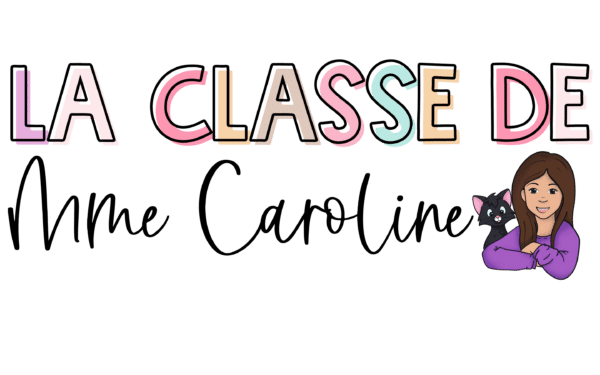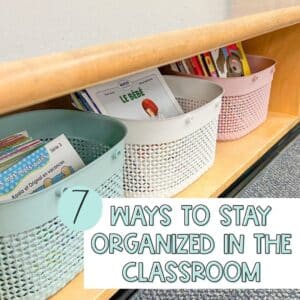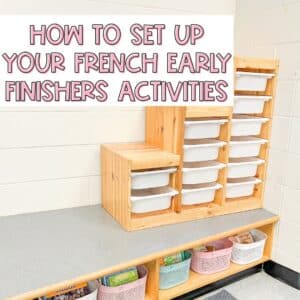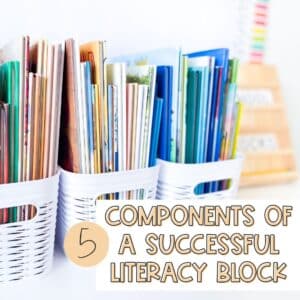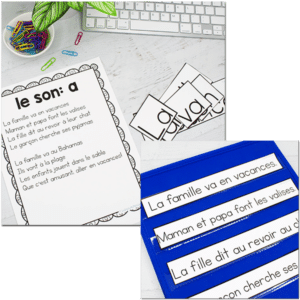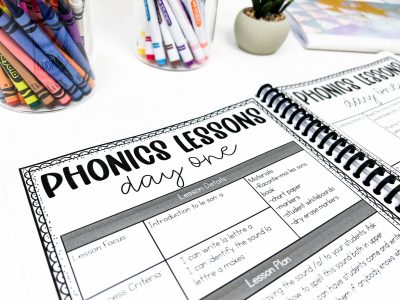Your French Literacy Block is arguably one of the most important aspects of your day at school. I hear over and over from teachers who are worried they’re not planning their French block well and are looking for tips on how to break it down.
Remember, it’s not about cramming every possible activity into a single hour. You’ll also be doing French activities during other subjects, like Science and Social Studies. In French Immersion, students are enveloped by the language. That being said, it’s still important to have an organized focused literacy block where you teach literacy skills explicitly.
While some activities should be a daily staple, others can be revisited a few times a week to ensure depth without overwhelming your students. Let’s explore how to create a balanced, engaging, and effective French literacy block for your classroom.
Phonics Lesson
In the heart of a successful French literacy block lies a steadfast commitment to phonics instruction. Each day, I carve out 5-10 minutes for this crucial teaching, focusing on the explicit instruction of sounds, decoding skills, and phonological awareness, which are fundamental for reading success.
Here are some tips for improving your student’s understanding:
- Focus on phonological and phonemic awareness, teaching a structured sequence that includes words, sentences, syllables, rhyming, beginning and ending sounds, and phoneme manipulation.
- Conduct regular assessments to track student progression, identify who is advancing, and who needs targeted support, ensuring personalised instruction.
- Incorporate a variety of interactive and engaging activities during French literacy blocks aimed at enhancing phonetic skills while fostering a deeper connection and fluency in the French language.

Reading Practice
As educators, we know how vital it is for our students to engage with reading daily. Not every child has the opportunity to immerse themselves in books at home, making our role in their literary journey even more crucial. In my French literacy block, I set aside 10 minutes for silent reading every day. It’s a practice you might consider slotting in at a consistent point in your daily routine, perhaps after a break, to cultivate a habit of reading.
Consistency is the thread that ties it all together – cultivate a genuine interest in books and encourage students to pursue a lifelong passion beyond the curriculum.
Beyond silent reading, I integrate shared reading sessions into our French literacy activities for primary students. These sessions, tailored around the week’s phonetic focus, foster not only reading skills but also collective learning and enjoyment. Such practices ensure that every student gains essential reading exposure, building a strong literacy foundation in French.

Grammar
Integrating grammar into your French literacy block is foundational, even for young learners. It might seem daunting, but there are age-appropriate ways to teach grammar beyond verb conjugation.
In Kindergarten and Grade 1, for instance, you can explore the concepts of masculine and feminine. Engage your students in sorting words by gender or altering words from singular to plural and vice versa. Introduce them to sentence structure and the correct use of capital letters, integrating these lessons seamlessly into your French literacy activities for primary students.
Grammar doesn’t always need a dedicated slot in your schedule; it can be woven into other lessons or subjects, particularly in the early grades. I often incorporate grammar as morning work, utilising resources tailored to each grade level. This doesn’t have to eat into your French literacy block, ensuring that every minute is optimised for varied learning experiences.
For those interested, I offer grammar activity samples to get you started: Grade 1, Grade 2, and Grade 3. Just remember, a little grammar goes a long way—five minutes a day can make a significant impact, introducing students to the basics in manageable, bite-sized chunks. This spiral approach, where you revisit and build upon concepts, ensures a solid and progressive learning journey in French grammar.

Writer’s Workshop
The writer’s workshop is one of my favourite parts of my literacy instruction. But I don’t deny it used to be quite stressful as I fell into the trap of giving them writing prompts, having them write a couple of sentences, and then handing it in. Writer’s workshop changed everything.
Here’s a breakdown:
- Mini-lesson: Demonstrate the day’s objective, beginning with simple ideas and progressing to more complex ones.
- Independent writing: Students write on a self-chosen topic within the specified genre.
- Sharing phase: Students share their work in diverse formats, promoting a collaborative and supportive environment.
In primary grades, we focus on basic writing styles, including narrative, procedural, non-fiction, descriptive, persuasive, opinion, and fiction writing. Dedicate just five minutes daily to this practice.

Vocabulary Building
Incorporating vocabulary building into various subjects is a key strategy in enhancing our French literacy block, ensuring that students not only learn language in isolation but also apply it across their academic experiences. We tackle vocabulary from different angles, linking it to subject-specific units, addressing vital non-curricular topics, and fostering conversational French skills.
Our approach to vocabulary expansion is twofold:
- Firstly, we engage in interactive games, which introduce students to new words in a fun and memorable context. These games are not only effective in our French literacy activities for primary students but also a favourite when I teach Core French.
- Secondly, and perhaps most importantly, we emphasize speaking French during class interactions. This method encourages authentic language use, helping students to naturally acquire new vocabulary and grasp correct sentence structures.
Encouraging students to communicate in French with one another proves to be a powerful tool in vocabulary acquisition, offering them the chance to apply new words in meaningful contexts and refine their language skills through practice and peer interaction.

